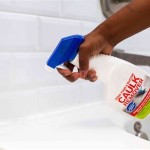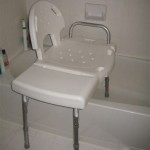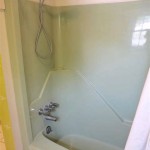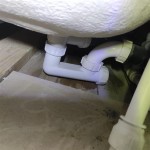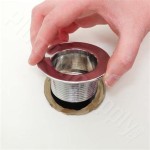Bathtub Baseboard Molding: A Comprehensive Guide
Bathtub baseboard molding serves both aesthetic and functional purposes in bathroom design. It provides a visually appealing transition between the bathtub and the surrounding walls or floor, while also protecting the wall from water damage. Selecting the right baseboard molding requires careful consideration of various factors, including material, style, and installation techniques.
One of the primary functions of bathtub baseboard molding is moisture protection. Bathrooms are inherently humid environments, and water splashing from the bathtub can seep into the wall cavity, leading to mold growth and structural damage. Properly installed baseboard molding creates a watertight seal that prevents moisture from reaching the wall, thus preserving its integrity.
Aesthetics also play a significant role in the choice of baseboard molding. The molding acts as a decorative frame for the bathtub, enhancing its overall appearance. Different molding profiles and materials can complement various bathroom styles, from traditional to contemporary. The selection of baseboard molding should harmonize with other design elements in the bathroom, such as tile, fixtures, and paint colors.
Several materials are commonly used for bathtub baseboard molding, each offering distinct advantages and disadvantages. Polyvinyl chloride (PVC) is a popular choice due to its affordability, water resistance, and ease of installation. PVC molding is available in various profiles and colors, making it a versatile option for many bathroom designs. However, PVC can become brittle over time and may not be as durable as other materials.
Another popular material is ceramic tile. Ceramic tile baseboard molding offers excellent water resistance and durability. It can be seamlessly integrated with tiled walls and floors, creating a cohesive and aesthetically pleasing look. However, installing ceramic tile molding can be more labor-intensive and requires specialized skills.
Natural stone, such as marble or granite, is a premium option for bathtub baseboard molding. Stone molding adds a touch of elegance and sophistication to the bathroom. It is highly durable and resistant to water damage. However, stone molding is typically more expensive than other materials and requires professional installation.
Composite materials, such as engineered stone or quartz, offer a balance of durability, affordability, and aesthetics. These materials are engineered to resist water damage and staining. They are available in a wide range of colors and patterns, allowing for design flexibility. Composite molding is generally easier to install than natural stone and requires less maintenance.
Choosing the appropriate molding profile is also an important consideration. The profile refers to the shape and design of the molding. Common profiles include quarter-round, half-round, and ogee. The choice of profile depends on personal preference and the overall bathroom style. Quarter-round is a simple and versatile option, while ogee offers a more decorative touch.
Proper installation is crucial for the effectiveness and longevity of bathtub baseboard molding. Before installation, the area should be thoroughly cleaned and dried. Any existing caulking or sealant should be removed. The molding should be cut to fit precisely and secured with adhesive and/or nails. A high-quality silicone sealant should be applied along the top edge of the molding to create a watertight seal.
Regular maintenance is essential to keep the bathtub baseboard molding in good condition. The molding should be cleaned regularly with a mild detergent and water. Any signs of damage, such as cracks or chips, should be repaired promptly to prevent water infiltration. Inspecting the caulking periodically and reapplying it as needed will maintain the watertight seal and prevent mold growth.
When selecting bathtub baseboard molding, it is important to consider the specific needs and style of the bathroom. Factors such as budget, desired level of maintenance, and overall design aesthetic should guide the decision-making process. Consulting with a professional contractor or designer can provide valuable insights and ensure proper installation.
The variety of materials and styles available offers ample opportunity to enhance the functionality and aesthetics of the bathroom. Careful consideration of these options will ensure the selection of bathtub baseboard molding that meets both practical and design requirements.
By understanding the function, materials, and installation techniques associated with bathtub baseboard molding, homeowners can make informed decisions that protect their investment and enhance the beauty of their bathrooms. Proper installation and maintenance will ensure the long-lasting performance and aesthetic appeal of the chosen molding.

10 Bathroom Makeover Quick And Easy Bathtub Trim Tub

How To Meet Bullnose Tile With Baseboard Round The Edge Of Soften Bathroom Trim

Diy Network Bathroom Baseboard Trim Merrypad

How To Install Baseboards Trim In A Bathroom Renovation Young House Love

Subway Tile Bathroom Baseboards Design Ideas

How To Add Decorative Moulding A Bathtub The Home Depot

How To Install Baseboards Trim In A Bathroom Renovation Young House Love

10 Bathroom Makeover Quick And Easy Bathtub Trim Hometalk

House Of Fara 8817 5 8 In X 7 1 4 96 Primed Mdf Baseboard Moulding Piece Total Li Feet The Home Depot

Installing Baseboards And Door Trim Houseful Of Handmade
Related Posts




